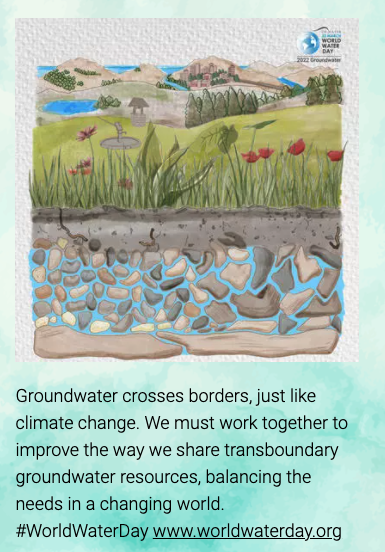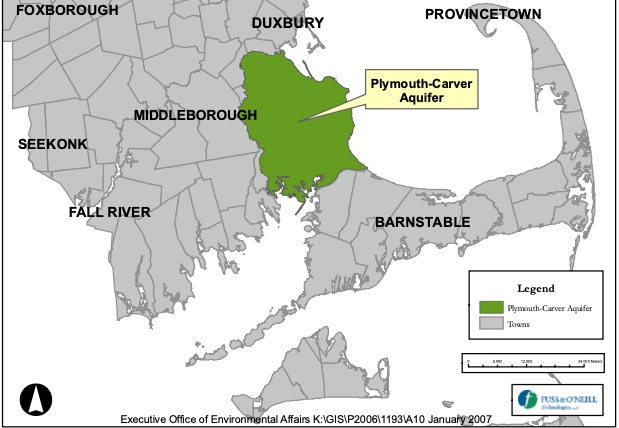In 1990, the United States Environmental Protection Agency (EPA) designated the Plymouth Carver Sole Source Aquifer as “sole source” giving it special protection under the federal Safe Drinking Water Act. The EPA made this designation because local residents and towns petitioned to protect the aquifer. EPA recognized that the aquifer is “very susceptible to contamination due to aquifer characteristics such as high groundwater and high permeability of soils”.
In 2007, the towns using the aquifer joined together to pledge to protected it. The result was the “Plymouth Carver Sole Source Aquifer Plan.” It contains important recommendations and steps to protect the aquifer. Get the report here: plymouth-sole-source-aquifer-final-action-plan-eoea-2007
Water is the single most important resource in growing cranberries, according to the Plan:
“Cranberry growers use a large fraction of the water extracted from the Plymouth-Carver Aquifer, as well as create and manage a large percentage of surface water that contributes recharge to the Aquifer.”
In most locations, the Aquifer lays close to the surface of the land. Where it intersects the surface of the land in kettle holes or depressions, it forms coastal plain ponds and wetlands. These ponds are known as as “Coastal Plain Ponds.
Today, over 150,000 people in Plymouth, Carver, Plympton, Bourne, Sandwich, Wareham, Kingston, Middleboro, Halifax, and even Brockton rely the Aquifer for water. Water from the Aquifer is diverted from Silver Lake in Kingston to Brockton and discharged to the Taunton River watershed.
Pollution from one town travels to another. Over use of the aquifer affects everyone. Sand and gravel mining is changing groundwater flow direction and recharge rates.

The aquifer lies under 92.9% of Carver and 99.3 % of Plymouth.
The Plymouth Carver Sole Source Aquifer is the second largest aquifer in Massachusetts. It covers about 200 miles.
The aquifer is vulnerable to salt water intrusion being made worse by sea level rise and climate change. In 2021, the Town of Plymouth and SEMBPA were awarded a state “Municipal Vulnerability Preparedness” grant to study the impacts. Find out more about Salt Water Intrusion and the work underway. How is sand and gravel extraction impacting the aquifer’s ability to deal with salt water intrusion? We hope the study will shed some light.

A unique feature of the Massachusetts Coastal Pine Barrens is the deposits of sand and gravel laid down by the glacier. The sand is high quality and unique, and a highly sought-after market commodity. In 2007, the Town of Carver participated in the Plymouth-Carver Sole Source Aquifer Advisory Committee stating that “protection of this natural resource is ours to share as a resource we all depend on in our day to day lives.” The plan has recommendations citing to:
Massachusetts Sand and Gravel Operation Guidelines: Vegetation and the upper soil horizons provide a pollution buffer for shallow groundwater. Improperly managed sand and gravel operations may reduce this protection and introduce hazardous materials and other toxins directly to groundwater. Massachusetts has developed guidelines for managing sand and gravel operations. The Massachusetts Clean Water Toolkit – NPS Management Manual provides guidance on this and many other subjects regarding nonpoint source pollution. (See http:/ /www.mass.gov/dep/water/resources/nonpoint.htm#megaman).
The report recommended that Carver and other towns take steps to improve sand and gravel removal regulations. Most towns adopted local bylaws to control sand and gravel removal operations — and they need to be enforced. That’s why our work is so important!

[…] municipalities have. Plymouth has 365 ponds, miles of shoreline and the Plymouth-Carver Sole Source Drinking Water Aquifer that serves over 150,000 people in seven towns. We need protective wetlands laws and a Conservation […]